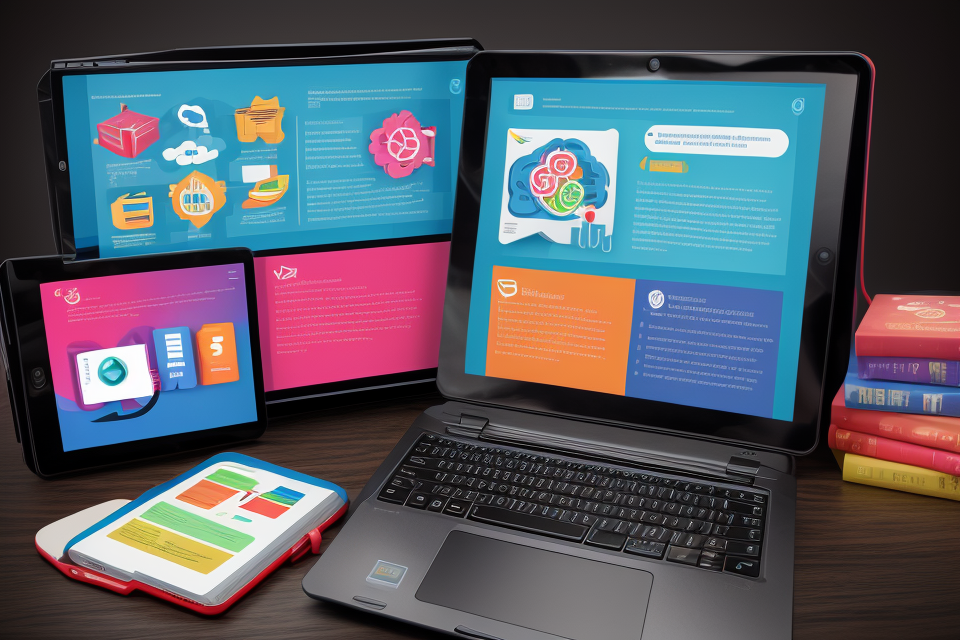The age-old question of whether technology will replace teachers in the classroom has been a topic of debate for many years. With the rapid advancements in technology, it’s no surprise that many people are starting to wonder if teachers will become obsolete. Some argue that technology can provide a more efficient and effective learning experience, while others believe that human interaction and personalized attention are irreplaceable. In this article, we will explore both sides of the argument and try to determine whether technology is poised to replace teachers in the classroom. So, let’s dive in and explore the possibilities!
Technology has made significant advancements in recent years, and it has already started to impact various industries, including education. While technology can enhance the learning experience, it is unlikely to completely replace teachers in the classroom. Teachers play a crucial role in shaping the future of our society, and they provide students with more than just knowledge. They offer guidance, mentorship, and support, which are essential for students’ overall development. Furthermore, technology alone cannot create a personalized learning experience, which is crucial for students to achieve their full potential. In conclusion, technology and teachers can work together to create a more effective and engaging learning environment, but it is unlikely that technology will replace teachers in the classroom.
The Growing Role of Technology in Education
Advantages of Technology in Teaching
- Increased Engagement
- Interactive multimedia
- Virtual reality
- Gamification
- Personalized Learning
- Adaptive software
- Learning analytics
- Intelligent tutoring systems
- Access to Information
- Online resources
- Open educational resources
- Distance learning opportunities
Challenges of Technology in Teaching
One of the primary challenges of incorporating technology into teaching is the lack of interaction between students and teachers. With the increasing reliance on digital platforms and tools, there is a risk that students may become passive consumers of information, rather than active participants in their own learning.
Another challenge is the dependence on technology. While technology can be a valuable tool for teaching and learning, it is not a replacement for the human touch. Teachers are able to adapt their teaching style to the needs of individual students, which is not possible with technology alone.
Additionally, technology can limit teacher-student interaction. When teachers rely too heavily on technology, they may neglect the importance of face-to-face communication with their students. This can lead to a lack of trust and understanding between students and teachers, which is essential for effective learning.
Overall, while technology has the potential to enhance teaching and learning, it is important to be aware of the challenges it poses and to use it in a way that complements, rather than replaces, the role of the teacher in the classroom.
The Evolution of Educational Technology
From Blackboards to Virtual Reality
- The Evolution of Teaching Tools
Educational technology has come a long way since the days of chalkboards and textbooks. With the advent of computers and the internet, teachers have been able to incorporate new and innovative teaching tools into their classrooms.
- Integration of Technology in Classrooms
Technology has been integrated into classrooms in various ways, from interactive whiteboards to online learning platforms. These tools have transformed the way teachers teach and students learn, making the learning experience more engaging and interactive.
- Emerging Technologies in Education
As technology continues to evolve, new and emerging technologies are being developed that have the potential to revolutionize education. Virtual reality, for example, is being used in some classrooms to provide immersive learning experiences that can enhance student engagement and understanding.
Overall, the integration of technology in the classroom has transformed the way teachers teach and students learn. As technology continues to evolve, it is likely that new and emerging technologies will be developed that will further enhance the learning experience.
The Pros and Cons of Teacher Replacement by Technology
Pros of Technology Replacing Teachers
One of the most significant advantages of technology replacing teachers in the classroom is the ability to provide consistency in learning. Technology-based educational tools can be programmed to deliver a consistent curriculum, ensuring that all students receive the same information and instruction, regardless of the teacher they have been assigned. This consistency can be particularly beneficial in subjects where there is a large amount of factual information that needs to be covered, such as math or science.
Another advantage of technology replacing teachers is accessibility. Technology-based educational tools can be accessed from anywhere at any time, as long as there is an internet connection. This means that students who may not have had access to quality education in the past, such as those in rural or remote areas, can now receive a high-quality education without having to leave their communities.
Finally, technology replacing teachers can be more cost-effective than traditional teaching methods. With technology-based educational tools, there is no need for teacher training, benefits, or other expenses associated with hiring and retaining teachers. This can be particularly beneficial for schools and school districts that are operating on tight budgets.
While there are certainly benefits to technology replacing teachers in the classroom, it is important to weigh these benefits against the potential drawbacks. Some of the potential cons of technology replacing teachers will be explored in the next section.
Cons of Technology Replacing Teachers
While technology has undeniably transformed education in many positive ways, it also has its limitations when it comes to replacing teachers in the classroom. Here are some cons of technology replacing teachers:
Lack of Personal Interaction
One of the most significant drawbacks of relying on technology to replace teachers is the lack of personal interaction between students and educators. Technology, no matter how advanced, cannot replicate the human touch that teachers provide. Teachers can identify and address students’ individual needs, offer encouragement, and provide personalized feedback, which cannot be replicated by a machine.
Inability to Adapt to Individual Needs
Technology is often designed to perform specific tasks, and it may not be able to adapt to individual needs as effectively as a human teacher can. Every student is unique, and they may have different learning styles, strengths, and weaknesses. While technology can provide personalized learning, it may not be able to adjust to the same extent as a human teacher who can observe students’ progress and adjust their teaching methods accordingly.
Limited Socialization Opportunities
Another downside of relying on technology to replace teachers is the limited socialization opportunities it provides. Students learn from each other, develop social skills, and build relationships that can help them throughout their lives. While technology can facilitate communication and collaboration, it cannot replicate the face-to-face interactions that students have with their peers and teachers. Technology may also limit the development of soft skills such as communication, teamwork, and empathy.
The Future of Teaching in a Technological World
The Role of Teachers in a Technological Classroom
As technology continues to advance and become more integrated into our daily lives, it raises the question of whether it will eventually replace teachers in the classroom. While it is true that technology can automate certain tasks and provide personalized learning experiences, it is important to recognize the unique role that teachers play in the educational process.
Facilitators of Learning
One of the primary roles of a teacher is to facilitate learning. This means creating a supportive and engaging learning environment where students can develop their skills and knowledge. Teachers do this by designing lesson plans, creating activities, and providing feedback to students. Technology can assist with these tasks, but it cannot replace the human touch that teachers provide.
For example, technology can provide personalized learning experiences by adapting to a student’s learning style and pace. However, it cannot provide the same level of emotional support and motivation that a teacher can. Teachers can recognize when a student is struggling and provide encouragement and guidance to help them overcome challenges.
Mentors and Guides
Another important role of a teacher is to serve as a mentor and guide to their students. This means providing advice, support, and guidance to help students navigate their academic and personal lives. Teachers do this by building relationships with their students, understanding their strengths and weaknesses, and providing guidance and support as needed.
While technology can provide information and resources, it cannot provide the same level of personalized guidance that a teacher can. Teachers can provide advice on academic and personal matters, offer encouragement and support, and help students develop important life skills such as time management and problem-solving.
Encouragers of Creativity
Finally, teachers play an important role in encouraging creativity and innovation in their students. This means fostering a love of learning, encouraging students to think critically and creatively, and providing opportunities for students to express themselves and explore their interests.
While technology can provide tools for creativity and innovation, it cannot replace the human element of encouragement and inspiration. Teachers can inspire their students to pursue their passions, encourage them to take risks and try new things, and provide feedback and support to help them develop their skills and ideas.
In conclusion, while technology can assist teachers in many ways, it cannot replace the unique role that teachers play in the classroom. Teachers are facilitators of learning, mentors and guides, and encouragers of creativity, and their human touch is an essential component of the educational process.
The Future of Teaching in a Technological World
- The Integration of Technology in Teaching
Technology has already started to play a significant role in education, and this trend is likely to continue in the future. The integration of technology in teaching can offer numerous benefits to both students and teachers. For instance, technology can provide students with access to a wealth of information, multimedia resources, and interactive learning tools that can enhance their learning experience. Technology can also help teachers to deliver lessons more effectively, assess student progress more accurately, and provide personalized feedback to students. - The Need for Teachers in a Technological Classroom
Despite the increasing role of technology in education, it is important to note that teachers will still play a crucial role in the classroom of the future. While technology can provide students with access to information and resources, it cannot replace the human interaction and guidance that teachers provide. Teachers bring a wealth of knowledge, experience, and expertise to the classroom, and they can use their skills to help students develop critical thinking, problem-solving, and communication skills. - The Importance of Human Interaction in Learning
Research has shown that human interaction is a critical factor in learning. While technology can provide students with access to information and resources, it cannot replace the social and emotional support that teachers provide. Teachers can use their knowledge of students’ strengths, weaknesses, and learning styles to create a supportive and engaging learning environment. They can also use their skills to motivate and inspire students, and to help them develop a love of learning that will last a lifetime.
In conclusion, while technology has the potential to transform education, it is important to recognize the unique role that teachers play in the classroom. Technology can complement teaching, but it cannot replace the human interaction and guidance that teachers provide. As we move towards a more technological future, it is essential that we continue to invest in the training and development of teachers, and that we recognize the importance of human interaction in learning.
FAQs
1. Is technology already replacing teachers in the classroom?
Technology is certainly being used more and more in the classroom, but it is not yet at the point where it can fully replace teachers. While technology can be used to deliver instruction and provide personalized learning experiences, it cannot replace the human interaction and support that teachers provide. Teachers are still necessary to facilitate learning, provide feedback, and guide students through their educational journey.
2. Will technology eventually replace teachers in the classroom?
It is possible that technology could eventually replace some of the tasks that teachers currently perform, such as delivering lectures or grading assignments. However, it is unlikely that technology will ever be able to fully replace teachers. Teachers bring a unique perspective and human touch to the classroom that technology cannot replicate. They are also able to adapt to the needs of individual students and provide personalized support and guidance.
3. What are the benefits of using technology in the classroom?
There are many benefits to using technology in the classroom, including increased student engagement, improved access to educational resources, and personalized learning experiences. Technology can also help teachers to more efficiently deliver instruction and assess student progress. However, it is important to remember that technology is a tool to support learning, not replace it.
4. What are the potential drawbacks of relying too heavily on technology in the classroom?
There are several potential drawbacks to relying too heavily on technology in the classroom, including decreased student engagement, decreased social interaction, and decreased critical thinking skills. It is important for teachers to strike a balance between using technology to support learning and incorporating other teaching methods, such as hands-on activities and group discussions, to ensure that students are developing all of the necessary skills for success.
5. How can teachers integrate technology into the classroom in a way that complements their role?
Teachers can integrate technology into the classroom in a way that complements their role by using it to support and enhance learning, rather than replace it. For example, teachers can use technology to deliver instruction, provide personalized learning experiences, and assess student progress. They can also use technology to facilitate communication with students and parents, and to provide additional resources and support outside of the classroom.



